Designed & Assembled in the USA
Choosing the right voltage transducer (also called a voltage sensor) for your application can be daunting since voltage transducers come in many configurations. This guide will help walk you through the process of making the right choice.
To learn more about voltage transducers, see our “What is a Voltage Transducer? whitepaper”
Each application will have unique requirements. To choose the right voltage transducer, gather the following key criteria shown in the table, and described further below.

Input Voltage Signal
To get started, a few things must be known about the voltage being measured, including:
1. Expected input voltage range?
2. Is the supplied voltage AC or DC?
3. If direct current (DC), is it bidirectional?
4. Is the signal clean or noisy?
Each of these will be explored further below.
Input Voltage Range
Voltage transducers are designed to measure specific voltage input ranges. Knowing the input range being monitored will narrow down the options. A sample of common input ranges is shown in the table below. Although not always the case, voltages will often start at zero volts and go up to a maximum expected voltage.
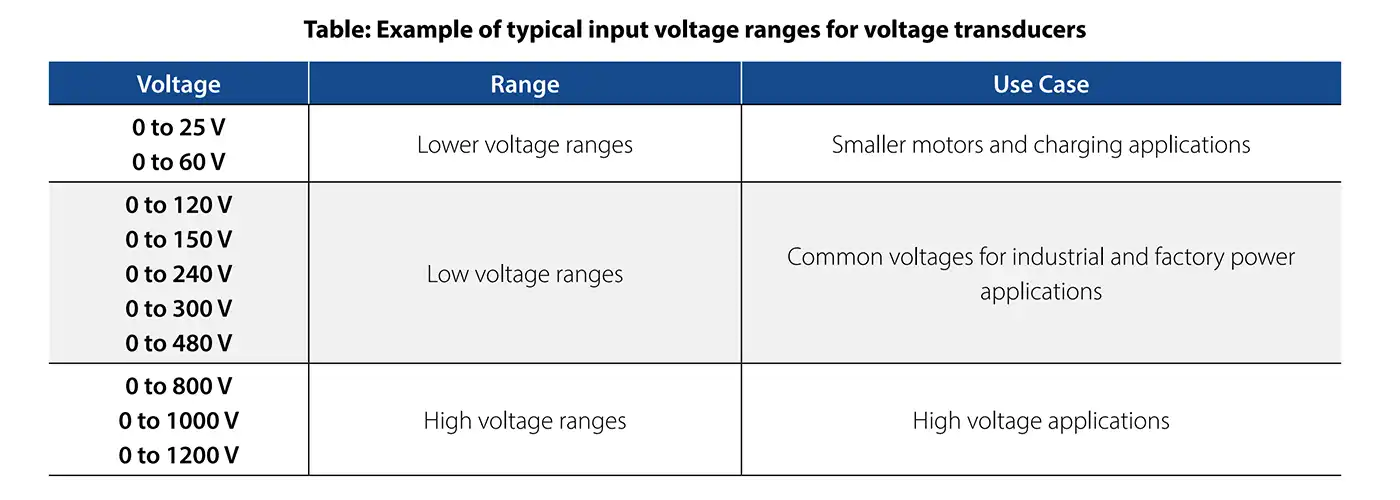
When monitoring voltage, it is useful to have a guard band around the “expected” voltage to measure what might occur in the field. For example, when measuring 120 V input voltage, it is useful to deploy a transducer that can measure up to 150 V so that “over-voltage” conditions can be monitored for when voltage exceeds the 120 V target.
Input Voltage Type
When measuring voltage, understanding the voltage type is critical. Voltage transducers have numerous designs and can be optimized for specific inputs. Some voltage transducers are designed to measure alternating current (AC) only, while others are designed to measure direct current (DC) inputs. More advanced devices can measure both AC (VAC) and DC (VDC) voltage.
If the input voltage is direct current (DC), will the current always be positive or is it bidirectional? For example, a DC motor may rotate one direction when positive current is applied and the opposite direction when a negative current is applied. A bidirectional voltage transducer must be used in this situation since many transducers only measure voltage starting at > 0 volts.
True RMS Voltage vs Average RMS Voltage : Is the Input Voltage “Clean”?
When measuring AC voltage, it is important to know how clean the source voltage is expected to be. If a clean sinusoidal source is guaranteed, then you can use either an “Average RMS” or “True RMS” voltage transducer. However, if the source voltage may be noisy, as is typical in a manufacturing environment, or if the measured voltage is not a pure sinusoidal wave (i.e. square wave, sawtooth wave or variable frequency input), then a True RMS voltage transducer should be used. Using an “Average RMS” transducer in a noisy environment will produce false readings.
In both cases, the output will be a measurement proportional to the RMS Voltage input, but a “True RMS” Voltage Transducer will
provide more accurate results.
Output Signal Type
When choosing an output signal, there are two “voltage” based options and one “current” based option.
The 0-5 VDC and 0-10 VDC output models provide a DC output “voltage” (VDC) that is proportional to the input voltage. When given a choice, the wider range of the 0-10 VDC model is preferred over the 0-5 VDC model as the larger 10 volt output range provides higher resolution measurements than the 5 volt output range.
Depending on the cable length from the voltage transducer output to the control device, you may need to calibrate the maximum voltage due to the voltage drop induced by long cable runs. This applies when using “voltage” as the output signal.
A 4-20 mA output signal provides a DC “current” output signal that is proportional to the input voltage.
When given a choice, the design preferences are shown in the table below:

Power Supply
Voltage transducers require a power source to operate, provided as either loop powered or more often an external power supply. Choose a power source that is both available and convenient.
24 VDC loop powered devices require that 24 VDC power is supplied in series with the output signal loop. In some cases, the output device (i.e. PLC) will supply the power internally, otherwise 24 VDC power must wired in series with the output. The NK Technologies VTR Series AC Voltage Transducers use loop powered 24 VDC.
24 VAC/VDC devices support both 24 VAC or 24 VDC and have separate power input connection as shown below.
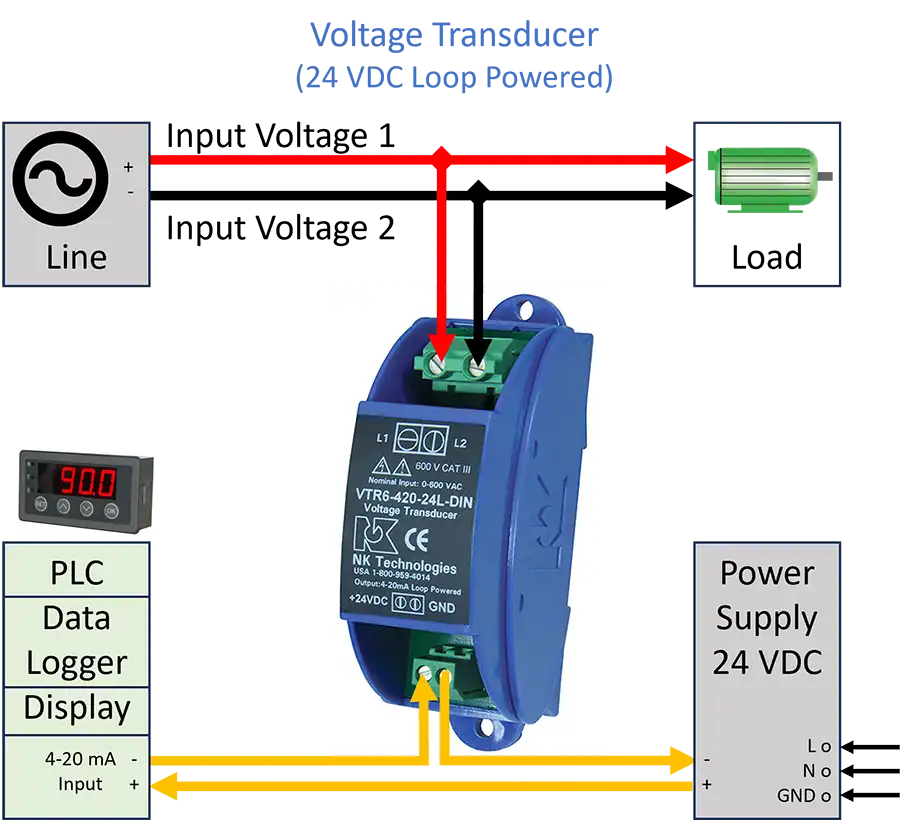
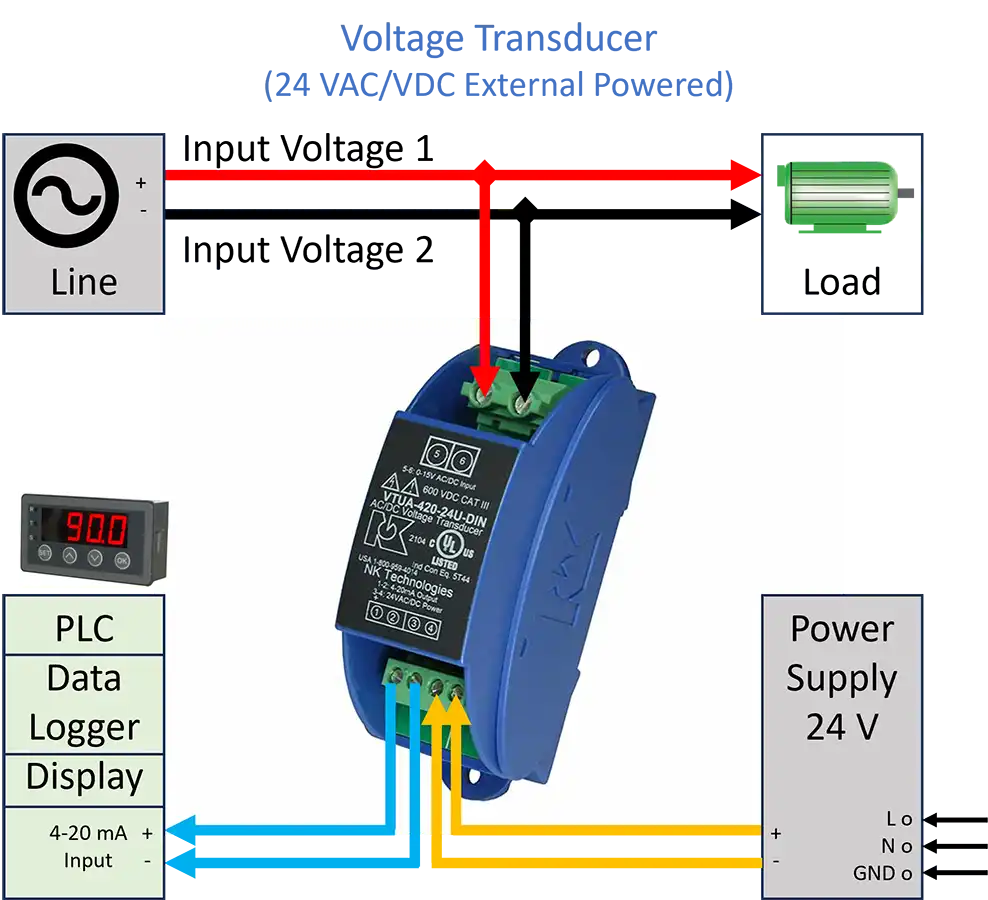
DIN Rail or Panel Mount Options
Mounting a voltage transducer inside an electrical panel or control panel is common. A well designed voltage transducer will support screw mounting directly to the panel, but will also accommodate attaching directly to a DIN rail mount within the control panel.
DIN Rail Mounting
DIN rails are long metal strips used to mount components onto equipment cabinet racks. They securely fasten components such as circuit breakers, power supplies, sensors, transducers and control devices inside of a panel cabinet or frame.
NK Technologies voltage transducer cases easily snap on to common 35 mm “Top Hat” DIN rails (TS35 or EN50022). The 35 mm refers to the rail width from edge to edge.


The voltage transducer cases have built-in clips that allow it to snap on to the rail. To remove the transducer from the DIN rail, slide the clips away from the DIN rail to release the case from the rail.
Panel Mounting
The transducer case can also be panel mounted directly to the case by using the two or four mounting holes and either screw or bolt the
case directly to the inside panel.
All models of NK Technologies voltage transducer cases support both DIN rail and panel mount installation.
UL/cUL Listing and CE
When selecting a Voltage Transducer, a product that has a UL/cUL listing can help validate that the transducer has been tested by an outside laboratory for safety.
Product Selection Guide
Use the product selector below to quickly choose the right voltage transducer for your application in 3 easy steps.
1. Select the desired input voltage range being measured
2. Select the desired output signal
3. Select the power source
The VTU-DIN is often preferred (over the VTR/VTD) as it offers full coverage from 0 to 600 volts in both VAC and VDC. For higher voltages (800-1200 V), the VTU-OS is available, and the VTD-BD supports bidirectional voltage.
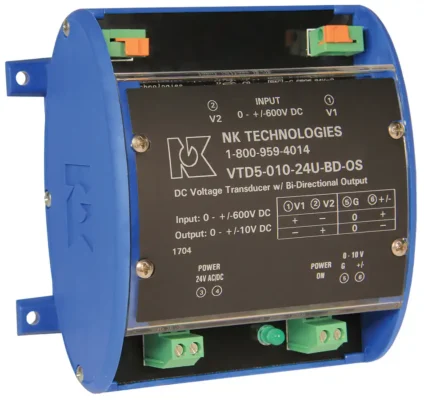
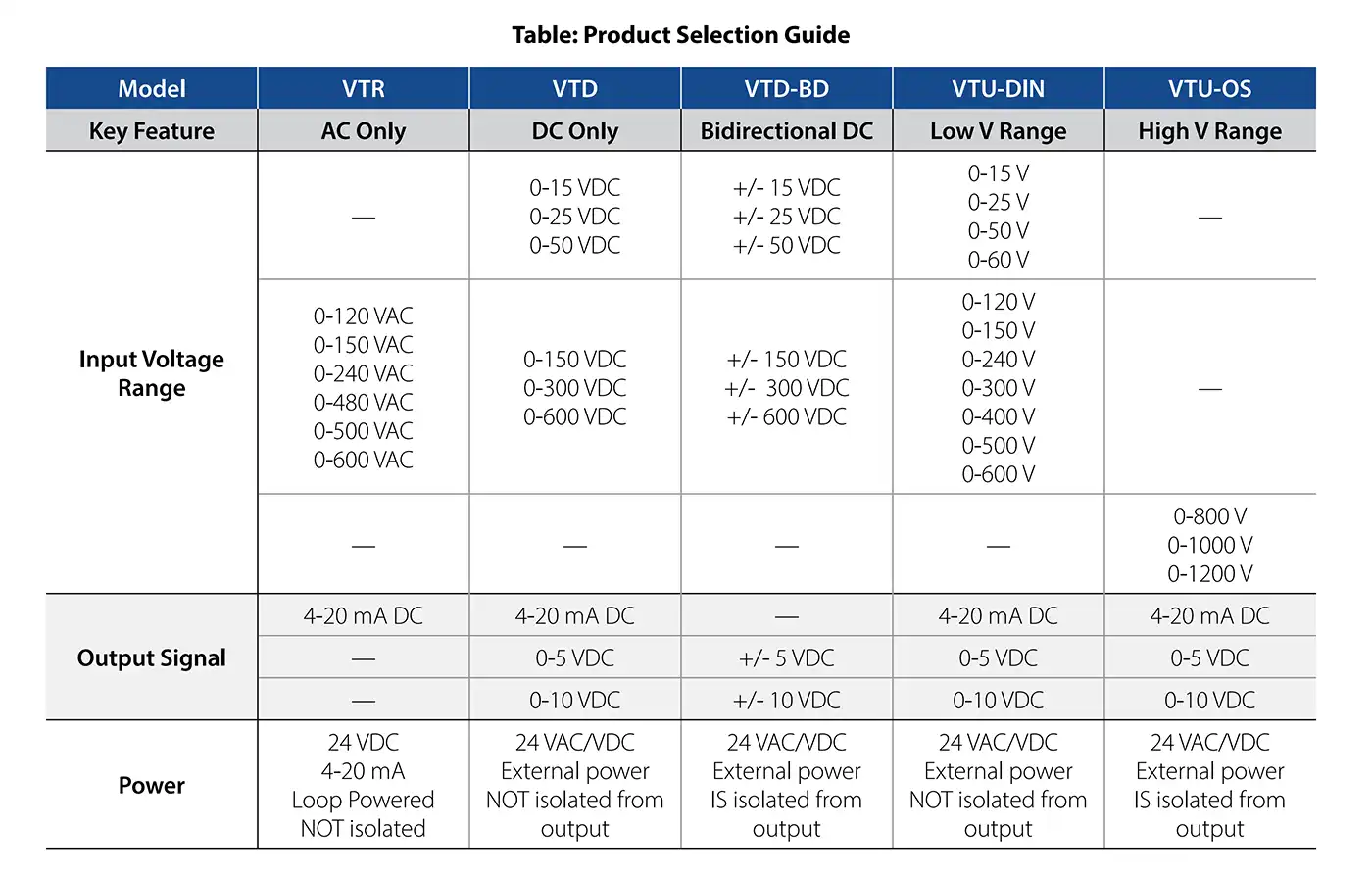
Voltage Transducers from NK Technologies
NK Technologies makes a complete line of Voltage Transducers that measure a variety of AC and DC voltage ranges and have the
following features:
• Voltage transducers measure “True RMS” for accurate results
• DIN Rail or Panel Mount
• UL/cUL and CE certified.
To learn more about voltage transducers see our whitepaper, “What is a Voltage Transducer.”
